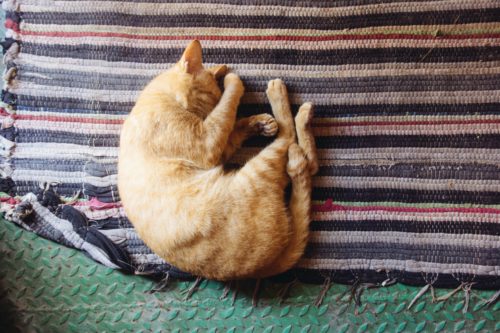Sleep is an underrated and under-appreciated aspect of our overall health. In fact, it’s just as important as proper diet and exercise, and it works in tandem with these two. Improving your sleep can help keep the symptoms of stress, anxiety, and depression at bay. Aside from mental health benefits, waking up feeling rested typically means your body is in its peak physical rhythm, with healthy metabolic processes in place.
So what does improving your sleep look like? There are a bunch of different things you can do to help create some positive change in your nightly routine, but to understand where you can make improvements, it helps to know a few key facts about best practices.
The actual amount of sleep you need
Contrary to popular belief, the universally prescribed eight hours of sleep each night is about as well-suited to the entire population as one-size-fits-all apparel items. Sleep, like many things, exists on a spectrum with a sweet spot of somewhere between six and nine hours.
Play around with your sleep time to find out what is best suited to your body. If you wake up naturally and consistently at the same time feeling well-rested, you’ve probably found your sweet spot! Try to stick to it for a week and see how you’re feeling. Add more time if you’re struggling in the afternoon, or pull back if you’re waking up long before your alarm even rings.
 The power of the power nap
The power of the power nap
Even if you have a healthy relationship with your sleep, sometimes drowsiness is unavoidable. And that’s ok! Lost sleep can never be truly gained back, but sometimes, a rejuvenating nap can make a world of difference in your overall mood and productivity.
Much like finding your sleep spot for a good night’s rest, it is important to dial in your body’s best amount of time spent napping. Some studies suggest that naps as little as seven to 10 minutes boost alertness, but the most and best benefits come between 20 to 30 minutes. Experiment and find out what works best for you!
Alcohol is not a sleep aid
The tradition of the nightcap is well known in our culture, with the earliest introduction over some 200 odd years ago in folk medicine as a means to promote sleep. The name nightcap comes from the actual garment — a small hat used to keep you warm through the night, long before the advent of heating systems. The nighttime drink’s alcohol, like the actual nightcap, is meant to create a feeling of warmth.
Unfortunately, science has found the opposite to be true of alcoholic beverages before bed. While a small amount of alcohol may boost your body’s ability to fall asleep, the typical hard liquor drinks used as nightcaps contain too much alcohol for that to remain true. In fact, the opposite is much more the case: alcohol disrupts healthy sleep, leaving you missing out on hours you’ve spent in bed. Not to mention, your body grows accustomed to alcohol very quickly, meaning that with consistent use, you actually miss out on the positive effects.
Getting to sleep when you can’t
Struggling to get some shut-eye even though you’re desperate to get some rest for that big meeting tomorrow? Lying in bed for a half hour, tossing and turning, trying (and failing) to get to sleep isn’t going to do the trick. Instead, get out of bed and try reading, or another relaxing activity.
Be mindful not to turn to your devices when this happens — the blue light is disruptive to sleep, and you may find it even more difficult to fall asleep after an extended period of staring at a screen. Stick to quiet activities that invite some drowsiness.
Know your body
In the end, improving your sleep routine is down to knowing and listening to your body. If you’re feeling some afternoon drowsiness, try pushing your bedtime back a half hour, or playing with your exercise schedule. It can be tricky, but the long term health benefits of consistent, restful sleep are too great to ignore.







